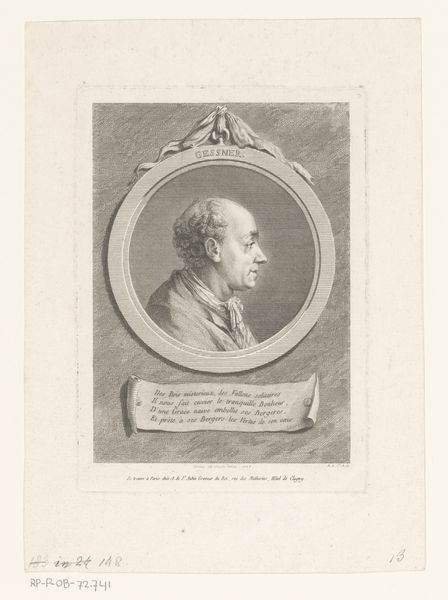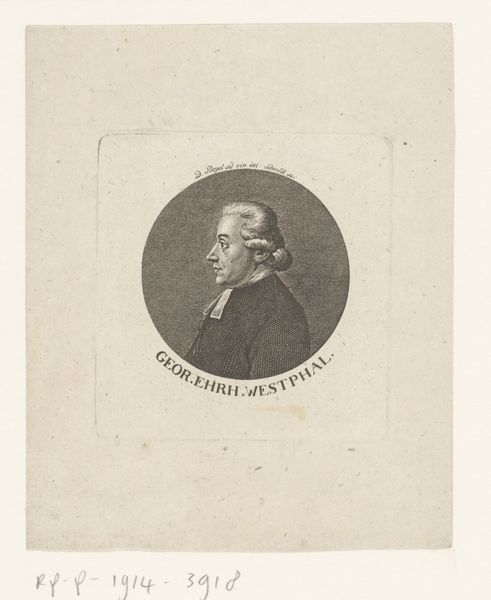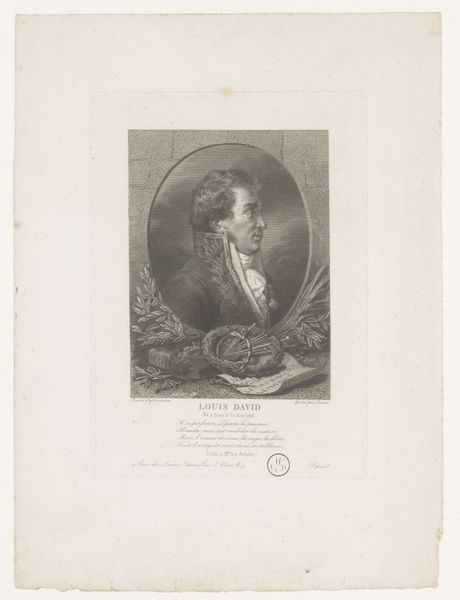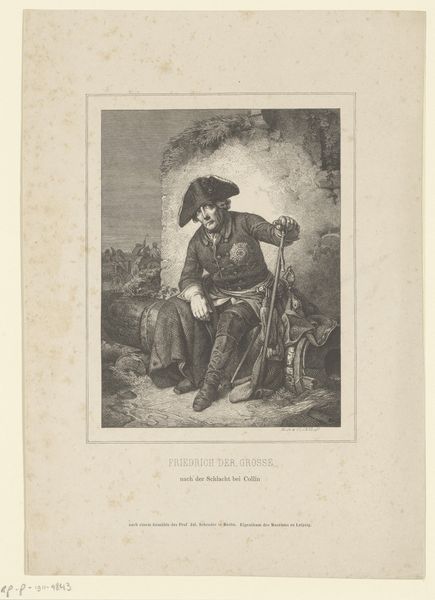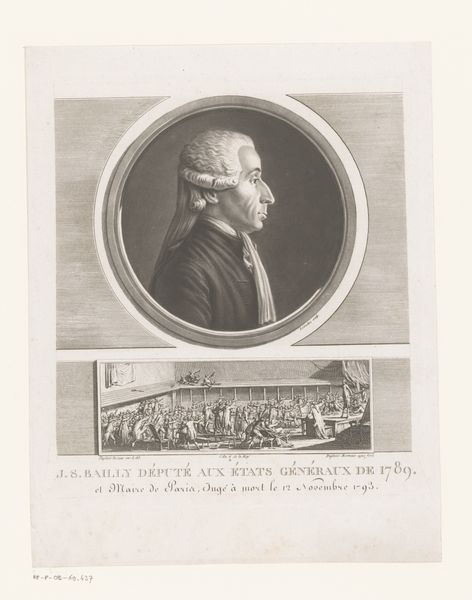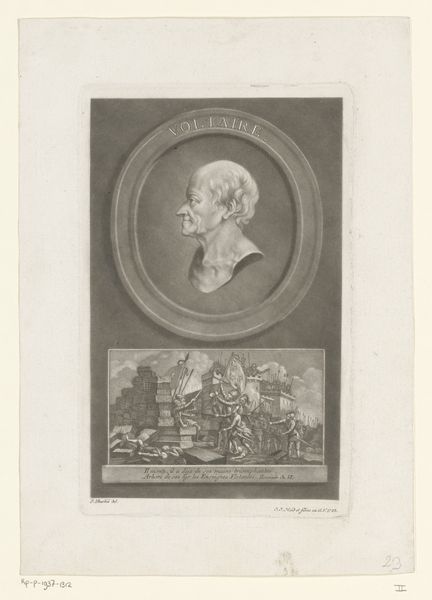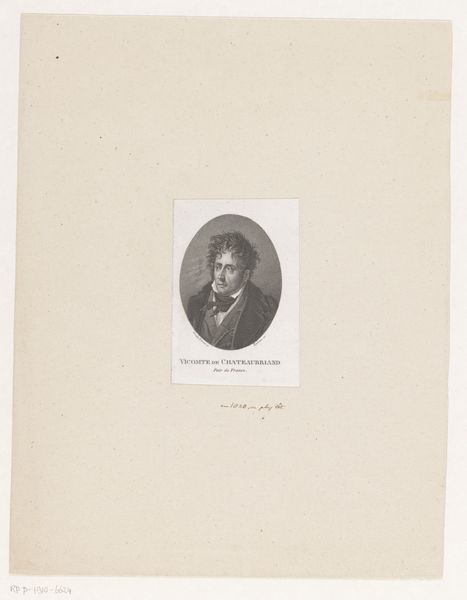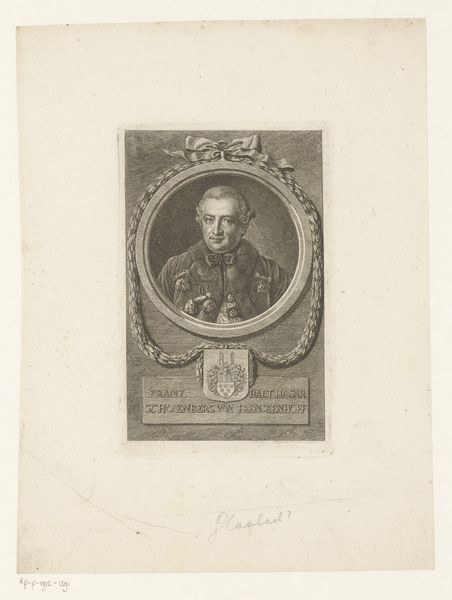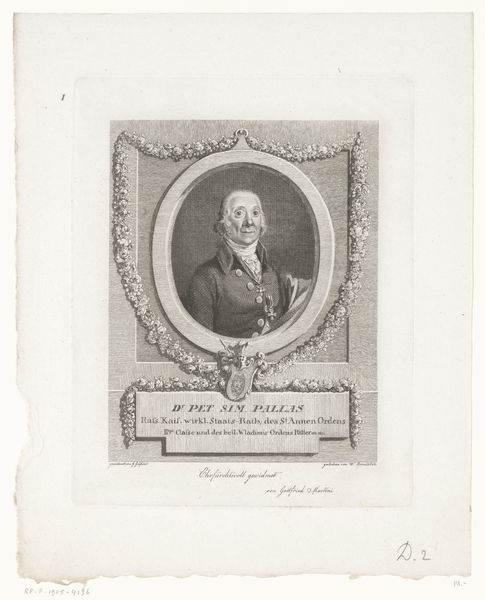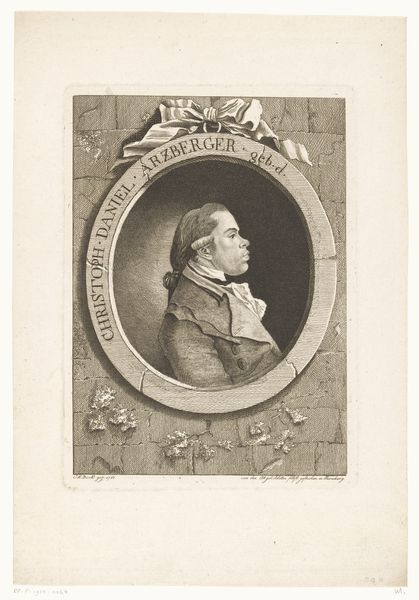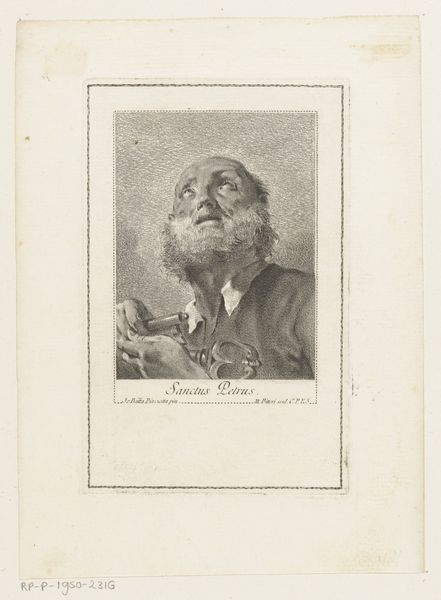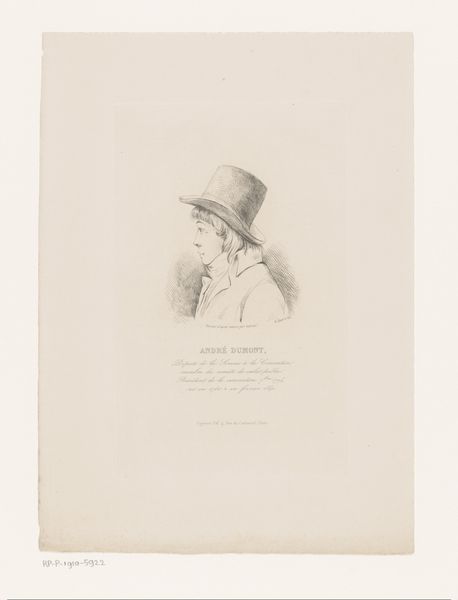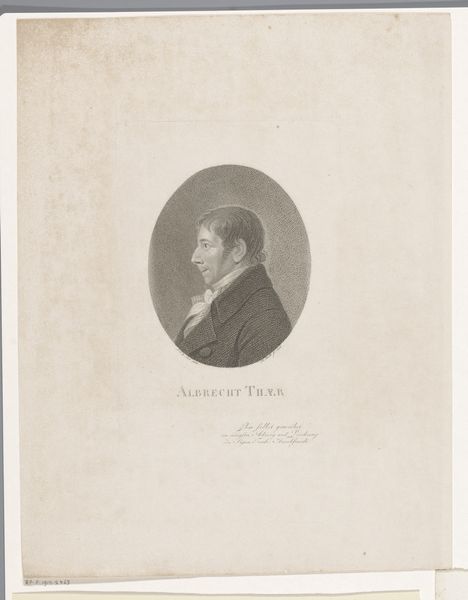
print, engraving
# print
#
19th century
#
symbolism
#
history-painting
#
engraving
Dimensions: height 335 mm, width 260 mm
Copyright: Rijks Museum: Open Domain
Curator: This print, created in 1887 by Jan Holswilder, presents a rather compelling image of Eduard Douwes Dekker, better known as Multatuli. It's an engraving, offering us a glimpse into the perception of this influential Dutch writer during his time. Editor: My immediate impression is one of controlled veneration. The somber portrait is almost engulfed by celebratory textual wreaths, all rendered in a tight, linear fashion. The density feels purposeful, almost like a manufactured memorial. Curator: Indeed. Holswilder uses the formal portrait as a central point, encasing Dekker within symbolic inscriptions like "Ideeën Max Havelaar"—referencing his famous work exposing colonial abuses in the Dutch East Indies. It's clear that Holswilder aims to highlight Dekker's intellectual contributions and rebellious spirit. The choice of engraving also gives the piece a historical, almost monumental, feeling. Editor: Right, the engraving process itself contributes significantly. It requires laborious tooling and painstaking precision; that deliberate approach seems entirely connected with an appreciation of literary and revolutionary creation. And look, fragments of text and dates intertwine with foliate embellishments as if claiming him as an artifact. But let’s also acknowledge the economic means—this wasn't an inexpensive image to reproduce. Who bought or distributed it? Curator: These details invite an understanding of how Multatuli’s works impacted Dutch society. Holswilder strategically weaves text, dates, and Dekker's image into a harmonious, if somewhat dense, visual narrative to encapsulate Dekker's life and legacy, suggesting not just a historical account but a call for lasting social reflection and justice. Editor: Looking at the paper itself, and considering that it accompanied a broader publication called De Lantaarn, it suggests affordable access at least among the readership who cared about political satires, and intellectual freedom, likely circulating these challenging notions of colonialism and identity more widely. It almost acts as propaganda of a modern-minded intellectual elite. Curator: It becomes more than just a portrait then, transforming into a layered document reflecting contemporary ideologies surrounding Multatuli and the Netherlands. Editor: Precisely, through careful materiality we uncover deeper meaning in the depicted social narrative. What seems purely reverential carries layers upon layers regarding circulation of ideals.
Comments
No comments
Be the first to comment and join the conversation on the ultimate creative platform.
